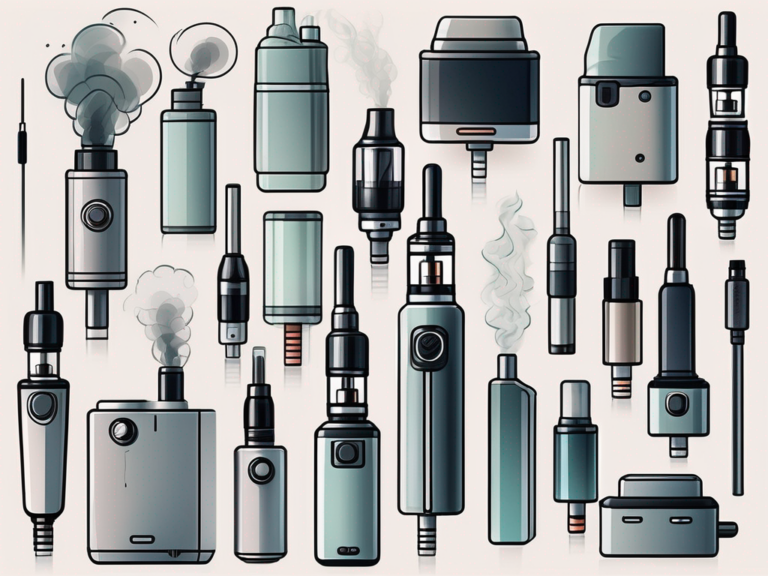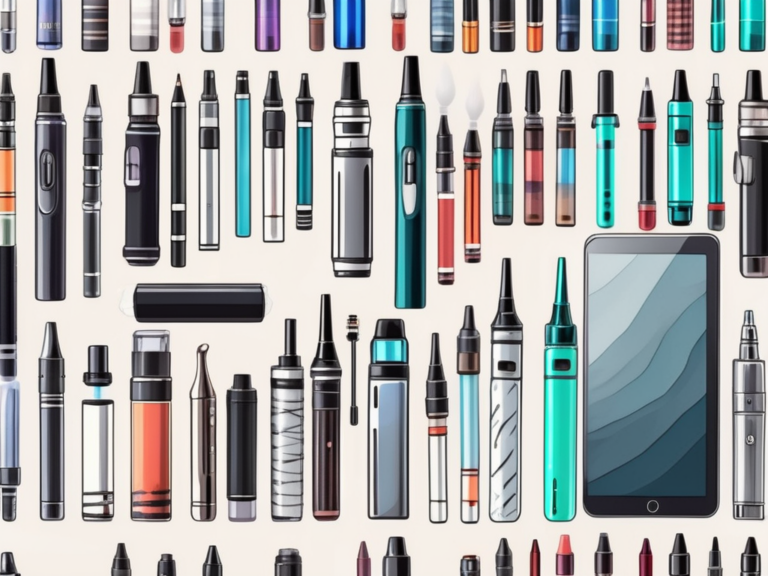how do vapes work
Vaping has gained immense popularity in recent years as an alternative to traditional smoking. If you’ve ever wondered how vapes work, this article will provide you with a comprehensive understanding of the technology behind it. Whether you’re new to vaping or curious about the science behind it, read on to demystify this modern phenomenon.
Understanding the Basics of Vaping
What is Vaping?
Vaping is the act of inhaling and exhaling aerosol, often referred to as vapor, produced by an electronic device known as a vape. Unlike traditional cigarettes, vapes utilize a heating element to transform a liquid solution into vapor for inhalation.
Many people turn to vaping as an alternative to smoking, as it is often perceived as a less harmful option. The process of vaping involves the user activating the device, which then heats up the e-liquid and produces vapor that is inhaled. This vapor can come in a variety of flavors, catering to different preferences and tastes.
The Components of a Vape
A typical vape consists of several key components. Firstly, there is the power source, usually a rechargeable battery. This battery provides the energy necessary to heat the vape’s core, known as the atomizer or coil. Additionally, vapes are equipped with a tank or cartridge which houses the e-liquid, and a mouthpiece through which the user inhales the vapor.
The atomizer or coil plays a crucial role in the vaping process. It is responsible for heating the e-liquid to the point of vaporization, creating the inhalable vapor that users enjoy. Different vapes may have varying types of atomizers, each affecting the vaping experience in its unique way.
The Role of E-Liquid in Vaping
E-liquid, also known as vape juice, is a vital component of the vaping experience. It is a liquid solution primarily composed of propylene glycol (PG), vegetable glycerin (VG), flavorings, and often contains varying levels of nicotine. When heated by the atomizer, the e-liquid undergoes a transformation, turning into inhalable vapor.
Users can choose from a wide range of e-liquid flavors, from traditional tobacco and menthol to fruity and dessert-inspired options. The variety of flavors available adds to the appeal of vaping for many individuals, allowing them to customize their experience to suit their preferences. Additionally, the option to select e-liquids with different nicotine strengths provides users with control over their nicotine intake, making vaping a versatile choice for those looking to manage their nicotine consumption.
The Science Behind Vaping
The Process of Vaporization
Vaporization is the key process that occurs when you vape. When the battery in your vape device is activated, it heats the coil, which is in contact with the e-liquid. As the e-liquid comes into direct contact with the hot coil, it is transformed into vapor, ready to be inhaled.
One fascinating aspect of vaporization is the speed at which it occurs. The moment the e-liquid touches the heated coil, it undergoes a rapid transformation, turning into vapor almost instantaneously. This swift conversion is what allows users to experience the effects of vaping almost immediately after taking a puff.
The Role of Heat in Vaping
Heat plays a crucial role in the vaping process. When the coil reaches a specific temperature, usually between 300-600 degrees Fahrenheit (150-315 degrees Celsius), it activates the e-liquid and facilitates the conversion from liquid to vapor. The heat provides the necessary energy to vaporize the e-liquid, ensuring an enjoyable vaping experience.
It’s important to note that different vaping devices and setups allow users to customize their heat settings, influencing the flavor and intensity of the vapor produced. By adjusting the temperature of the coil, vapers can fine-tune their experience to suit their preferences, whether they enjoy cooler, smoother vapor or warmer, more robust clouds.
How E-Liquid Turns into Vapor
As the e-liquid is heated, it undergoes a phase change from a liquid to a gaseous state. The heat energizes the molecules within the e-liquid, causing them to transition from a condensed liquid form to a vapor. This vapor, containing the flavorings and nicotine present in the e-liquid, is then inhaled by the user.
Moreover, the process of vaporization is not just about transforming the e-liquid into vapor; it also involves the creation of aerosols. These tiny droplets of liquid are suspended in the vapor and play a crucial role in delivering the flavor and nicotine to the user. The size and distribution of these aerosols can impact the overall vaping experience, influencing factors such as throat hit and cloud production.
Different Types of Vapes
E-Cigarettes
E-cigarettes, often referred to as cig-a-likes, are small and discreet devices designed to resemble traditional cigarettes. They typically consist of a rechargeable battery and a disposable or refillable cartridge filled with e-liquid. E-cigarettes are widely available and provide a simple entry point for individuals new to vaping.
One of the key advantages of e-cigarettes is their ease of use and portability. Due to their compact size and cigarette-like appearance, they are often favored by individuals looking for a vaping device that closely mimics the experience of smoking traditional cigarettes. E-cigarettes are also available in a variety of flavors, allowing users to explore different taste profiles and find their preferred e-liquid options.
Vape Pens
Vape pens are slightly larger than e-cigarettes and offer more functionality. They have a longer battery life, larger e-liquid capacity, and often allow users to adjust their vaping experience by controlling factors such as airflow and power output. Vape pens are a popular choice among intermediate vapers.
One of the main attractions of vape pens is their versatility. With features like adjustable settings and compatibility with a wide range of e-liquids, vape pens offer users the opportunity to customize their vaping experience to suit their preferences. Additionally, the larger battery capacity of vape pens ensures longer usage times, making them ideal for vapers who are constantly on the go.
Pod Systems
Pod systems are compact, user-friendly devices that utilize pre-filled or refillable pods containing e-liquid. They offer a convenient and hassle-free vaping experience, generally requiring minimal maintenance. Pod systems are popular among beginners and those seeking a portable vaping solution.
One of the standout features of pod systems is their simplicity. These devices are designed for ease of use, with many models featuring draw-activated firing mechanisms that eliminate the need for complex settings or buttons. Pod systems are also known for their efficiency, as the pods often have high nicotine concentrations, making them a suitable choice for individuals looking to satisfy their nicotine cravings quickly and effectively.
Mods
Mods, short for modified devices, are advanced vape setups geared towards experienced vapers. They provide enhanced performance and customization options, allowing users to adjust various parameters such as wattage and temperature. Mods often feature removable batteries and larger e-liquid capacities, catering to those who desire a more personalized vaping experience.
What sets mods apart from other types of vapes is their focus on performance and customization. Advanced users appreciate the ability to fine-tune their vaping experience by adjusting settings like wattage and temperature to achieve their desired vapor production and flavor intensity. Mods also offer a wide range of coil options, allowing vapers to experiment with different resistances and materials to find the perfect balance between flavor and vapor production.
The Health Implications of Vaping
Potential Risks and Side Effects
While vaping is generally considered less harmful than traditional smoking, it is not without potential risks and side effects. Some studies suggest that certain e-liquid ingredients may have adverse respiratory effects. For example, a study published in the Journal of Environmental Science and Technology found that the heating of certain flavoring chemicals in e-liquids can produce harmful byproducts, such as formaldehyde, which is a known carcinogen. This highlights the importance of understanding the composition of the e-liquids you use and opting for those with safer ingredients.
Additionally, excessive nicotine consumption can lead to addiction and potential health concerns. Nicotine is a highly addictive substance, and while vaping allows users to control their nicotine intake more easily compared to traditional cigarettes, it is still important to be mindful of the amount consumed. Nicotine addiction can have various health implications, including increased heart rate, elevated blood pressure, and potential adverse effects on brain development in adolescents.
Vaping vs. Traditional Smoking
Compared to traditional smoking, vaping is generally regarded as the less harmful option. Traditional cigarettes contain thousands of harmful chemicals, many of which are known to cause cancer. Vaping eliminates combustion and the production of smoke, significantly reducing exposure to toxic chemicals. However, while vaping may be considered a harm reduction tool, it does not come without its own set of potential risks.
One of the concerns with vaping is the lack of long-term studies on its effects. While it is true that vaping has been around for over a decade, the long-term health implications are still not fully understood. It takes time to gather comprehensive data on the potential risks associated with vaping, especially considering the wide variety of e-liquid ingredients and vaping devices available in the market. Therefore, it is important to approach vaping with caution and stay informed about the latest research findings.
The Controversy Surrounding Vaping
Vaping has become a topic of debate, with conflicting opinions on its effectiveness as a smoking cessation aid and potential impact on public health. While some view vaping as a viable tool for harm reduction, others express concerns about the potential gateway effect to traditional smoking among youth. It is important to stay informed about the evolving evidence and regulations surrounding vaping.
One area of controversy is the marketing and flavors of vaping products. Critics argue that the appealing flavors, such as fruit and candy, can attract young individuals who may have never smoked before. This has raised concerns about the potential normalization of vaping and its impact on youth initiation of nicotine use. As a result, some countries and jurisdictions have implemented stricter regulations on the marketing and availability of flavored vaping products.
Furthermore, there is ongoing debate regarding the effectiveness of vaping as a smoking cessation aid. While some studies suggest that vaping can help individuals quit smoking, others argue that it may perpetuate nicotine addiction or serve as a substitute for traditional cigarettes rather than a means of quitting altogether. The complex nature of addiction and the individual variability in quitting methods make it challenging to draw definitive conclusions.
In conclusion, understanding how vapes work is crucial for both beginners and experienced vapers. By grasping the basics of vaping, comprehending the scientific principles involved, and being aware of the different types of vapes available, you can make informed decisions about your vaping journey. Remember to prioritize your health and use vaping devices responsibly.






